Farwa Abbas
Robust Partial Least Squares Using Low Rank and Sparse Decomposition
Jul 09, 2024Abstract:This paper proposes a framework for simultaneous dimensionality reduction and regression in the presence of outliers in data by applying low-rank and sparse matrix decomposition. For multivariate data corrupted with outliers, it is generally hard to estimate the true low dimensional manifold from corrupted data. The objective of the proposed framework is to find a robust estimate of the low dimensional space of data to reliably perform regression. The effectiveness of the proposed algorithm is demonstrated experimentally for simultaneous regression and dimensionality reduction in the presence of outliers in data.
Stationary and Sparse Denoising Approach for Corticomuscular Causality Estimation
Jun 24, 2024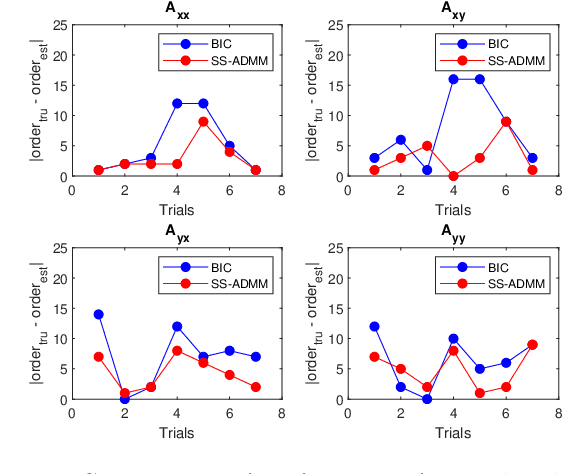
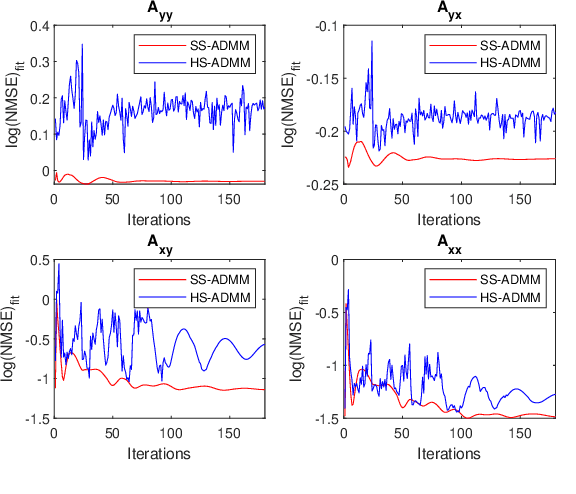
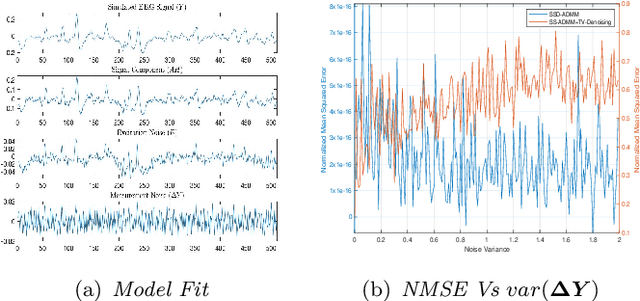
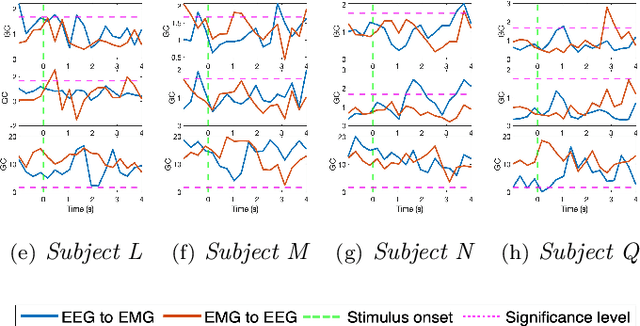
Abstract:Objective: Cortico-muscular communication patterns are instrumental in understanding movement control. Estimating significant causal relationships between motor cortex electroencephalogram (EEG) and surface electromyogram (sEMG) from concurrently active muscles presents a formidable challenge since the relevant processes underlying muscle control are typically weak in comparison to measurement noise and background activities. Methodology: In this paper, a novel framework is proposed to simultaneously estimate the order of the autoregressive model of cortico-muscular interactions along with the parameters while enforcing stationarity condition in a convex program to ensure global optimality. The proposed method is further extended to a non-convex program to account for the presence of measurement noise in the recorded signals by introducing a wavelet sparsity assumption on the excitation noise in the model. Results: The proposed methodology is validated using both simulated data and neurophysiological signals. In case of simulated data, the performance of the proposed methods has been compared with the benchmark approaches in terms of order identification, computational efficiency, and goodness of fit in relation to various noise levels. In case of physiological signals our proposed methods are compared against the state-of-the-art approaches in terms of the ability to detect Granger causality. Significance: The proposed methods are shown to be effective in handling stationarity and measurement noise assumptions, revealing significant causal interactions from brain to muscles and vice versa.
Deep Ptych: Subsampled Fourier Ptychography using Generative Priors
Dec 22, 2018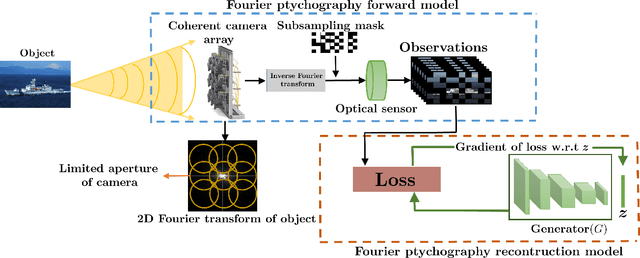

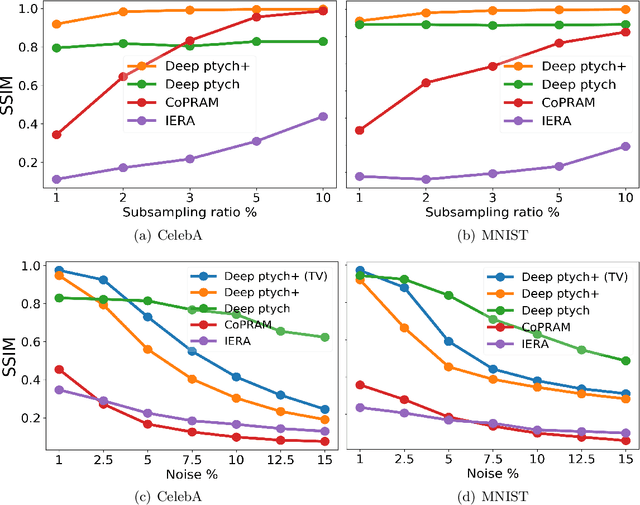
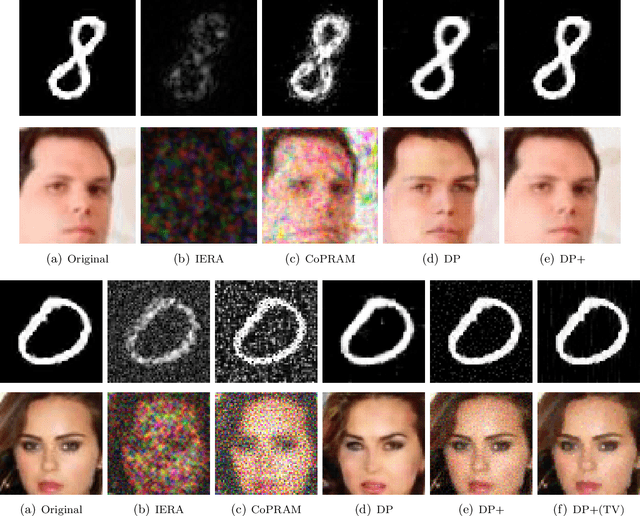
Abstract:This paper proposes a novel framework to regularize the highly ill-posed and non-linear Fourier ptychography problem using generative models. We demonstrate experimentally that our proposed algorithm, Deep Ptych, outperforms the existing Fourier ptychography techniques, in terms of quality of reconstruction and robustness against noise, using far fewer samples. We further modify the proposed approach to allow the generative model to explore solutions outside the range, leading to improved performance.
 Add to Chrome
Add to Chrome Add to Firefox
Add to Firefox Add to Edge
Add to Edge